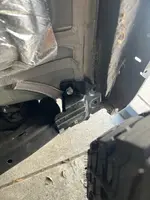- Jan 29, 2023
- 252
- 771
I finally got around to putting new wheels and tires on the truck. I picked out some Falken Wildpeak AT4Ws on Method 305s with -12 offset that I picked up on sale.

I installed the ucas and leveling spacer before heading to the tire shop.

I had read through AXE”s thread: https://www.chevyzr2.com/threads/method-305-nv-toyo-oc-rt-trail.623/ and I was planning on doing the same wheels and same sized tires, did the same trimming he did before heading to the shop, and I even had the leveling spacer so I should be golden right? Nope, they rubbed hard
Two things were working against me: falkens run big for their size and I added cognitos uca’s that have added castor. I probably wouldn’t have as much trouble if I had gone with 0 offset wheels (stock wouldn’t fit with the ucas) or settled for 285/70s (Falken even has one in D rating) but the tires had been mounted and I pressed forward. I needed to take it a step further if I was going to make any turns with this setup.
The front is easy, you can cut to your heart’s desire up there, add spacers to the bumper, or even mount up a prerunner skid plate.

But the rear is more constrained. Some googling lead me to this guide: https://wheelsasap.com/gmc-at4-oversized-tire-trimming-guide/ A lot of people completely remove this bracket as it gains a bunch of extra space for the tire to tuck into


But there are a bunch of body panels coming together under this bracket and it seems to help tie everything together.

So my solution was to cut down the bracket. It can’t be any worse than having the bracket completely removed, as many do, and with the bulk of it removed it is out of the way of the tire.


I installed the ucas and leveling spacer before heading to the tire shop.
I had read through AXE”s thread: https://www.chevyzr2.com/threads/method-305-nv-toyo-oc-rt-trail.623/ and I was planning on doing the same wheels and same sized tires, did the same trimming he did before heading to the shop, and I even had the leveling spacer so I should be golden right? Nope, they rubbed hard
Two things were working against me: falkens run big for their size and I added cognitos uca’s that have added castor. I probably wouldn’t have as much trouble if I had gone with 0 offset wheels (stock wouldn’t fit with the ucas) or settled for 285/70s (Falken even has one in D rating) but the tires had been mounted and I pressed forward. I needed to take it a step further if I was going to make any turns with this setup.
The front is easy, you can cut to your heart’s desire up there, add spacers to the bumper, or even mount up a prerunner skid plate.
But the rear is more constrained. Some googling lead me to this guide: https://wheelsasap.com/gmc-at4-oversized-tire-trimming-guide/ A lot of people completely remove this bracket as it gains a bunch of extra space for the tire to tuck into
But there are a bunch of body panels coming together under this bracket and it seems to help tie everything together.
So my solution was to cut down the bracket. It can’t be any worse than having the bracket completely removed, as many do, and with the bulk of it removed it is out of the way of the tire.
Attachments
Last edited:






